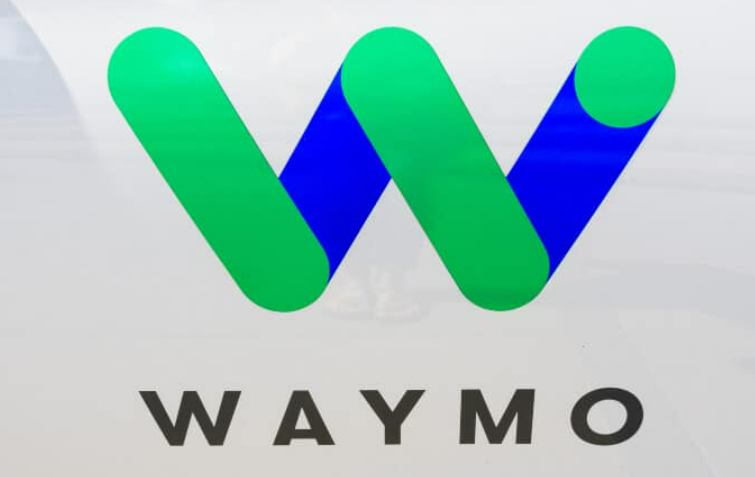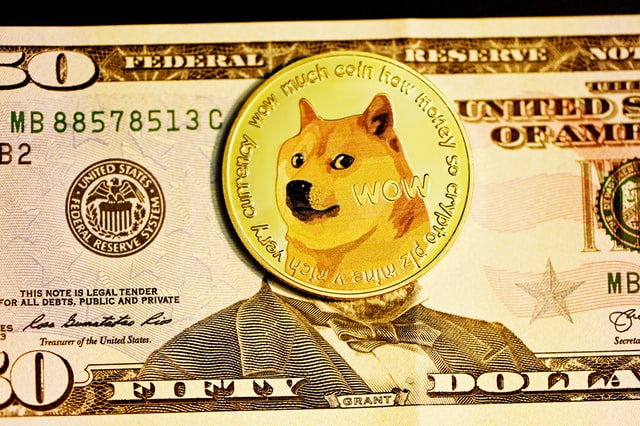
Haiden Holmes
Apr 01, 2022 17:06

The word "moneyness" refers to the ability of an option contract to profit if executed swiftly.
At The Money, Out Of The Money, or In The Money are all terms used to describe options.
This assists traders in determining the strike price to use while trading in certain market situations.
Moneyness is a measure of how closely the option's strike price corresponds to the current market value of the underlying asset.
In other words, moneyness refers to an option's intrinsic worth in its present form.
Traders classify options into three types depending on the strike price's connection to the underlying stock's current price. The categories indicate the monetary value of a chance.

Before you begin trading options, it's critical to understand these categories and what they signify. Each option strategy will combine these words, and newcomers might quickly get confused without a firm grasp of them.
The three distinct forms of option moneyness are as follows:
Out-Of-The-Money (OTM)
At-The-Money (ATM)
In-The-Money (ITM)
Moneyness in single Options contracts is a critical topic to learn when trading options. Money becomes more confusing when advanced option methods are included, so it's crucial to spend the time early on to create a fundamental grasp.
Two factors determine the price of an option:
Intrinsic value refers to the value of an option if it expires immediately. When traders refer to an option as being in the money, they refer to the fact that it has intrinsic value.
Options that expire out of the money have no intrinsic value. When traders state that a contract has expired worthless, they refer to an out-of-the-money option. The linkages between ITM, OTM, and ATM all contribute to determining the option's intrinsic value, which is a critical component in options pricing.
Although extrinsic value is a less significant component of moneyness, it is a critical notion to grasp when trading options.
Extrinsic value is composed of many components. The time value, or theta, of an option, is the part of the premium due to the remaining time before the contract expires. While not the sole factor, time value garners the most attention.
Time is a valuable commodity, as is the case in most situations, and time is essential in this scenario.
Generally, the longer the time remaining to expiry, the greater the option's extrinsic value. Investors will pay a more significant premium for an extended time since the contract will have more time to benefit from a positive movement in the underlying asset.
Additionally, the converse is true. When the remaining time to expiry approaches zero, investors become less eager to pay a premium since the stock has less time to become lucrative.
Out of the Money refers to an option with no intrinsic value and only extrinsic value. An option contract with no extrinsic value is said to be "out of the money" (OTM). The delta will be less than or equal to 50.0 percent with this particular selection.
The strike price of an OTM call option will be higher than the underlying asset's market price. The OTM put option, on the other hand, has a strike price that is less than the current market value of the underlying asset.
Contrast out-of-the-money (OTM) options with in-the-money (ITM) options.
If the underlying price is trading below the call option's strike price, the call option is out-of-the-money. If the underlying price is greater than the put option's strike price, the put option expires out of the money. Additionally, an option might be in the money or at the money. OTM options are cheaper than ITM or ATM options, and ITM options are intrinsically intrinsic, while ATM options are quite near to being intrinsically intrinsic.

An options contract is called "out of the money" if it lacks intrinsic value, which means that if it is exercised, the owner would pay more than the current market value of the underlying stock (in the case of a call option) or sell the underlying stock for less than the current market value (in the case of a put option).
In other words, a call option is out of the money if the strike price is higher than the market value of the underlying asset, and a put option is out of the money if the strike price is less than the market value of the underlying asset.
If a call option's strike price is $5 and the underlying stock is now trading at $4, the option is out-of-the-money. The lower the price falls below $5, the more OTM the option becomes.
If a put option's strike price is $5 and the underlying stock is now trading at $6, the option is out-of-the-money. The greater the option price exceeds $5, the more OTM it is.
Because this OTM put and who cannot execute call options profitably have any intrinsic value.
The above definition should not lead you to believe that OTM options are worthless. If such were the case, no need for such a categorization would exist since it would provide no practical profit to the trader. Moneyness and premium are critical components of a stock's cost and value. A previously purchased OTM option may begin to move closer to becoming an ITM (In the Money) option. ITM has a positive intrinsic value and a far better probability of profit. As a result, even though the option is now Out of The Money, this may not always be the case by the contract's expiry date. However, executing it is meaningless if the option is still valid at the expiry date. If you execute the OTM call option at expiry, you will finish purchasing the underlying stock at a premium to the market trading price.
OTM call options mean that the underlying stock's market price is now less than the strike price. On the other hand, an option is regarded as out-of-the-money if its current trading value exceeds its strike price. As the name implies, executing OTM calls results in a loss of money, as purchasing the stock at market value would have offered a greater profit than the cost of exercising the OTM call option's strike price. Investors may benefit from the put OTM option by selling the asset before the contract's expiry date. Otherwise, no profit is made since trading the stock at market value yields a higher return than trading it at the strike price.
In the case of calls and the money call option contract, a strike price is less than the underlying asset's market value. Permitting the holder to buy the item at a discount to market value and promptly sell it for a profit. In contrast, an option would be termed out-of-the-money if the stock price did not exceed the strike price; in this scenario, the contract would be worthless to option purchasers.

To summarize, call contracts are as follows:
In the money: market price of the stock exceeds the strike price
At the money: the price of the stock equals the strike price
Out of the Money: the stock price is less than the strike price
Put contracts are acquired by traders who predict an asset's price will decrease as a less risky alternative to short selling. When it comes to puts, an ITM option has a strike price greater than the current stock price, enabling the option holder to sell an asset at a premium to the current market price. OTM puts have strike prices that are more than the underlying asset's market value and hence are worthless to the put holder.
In summary, for establishes:
In the money: strike price of the stock
At the money: the price of the stock equals the strike price
Stock price > strike price when it is out of the money
While out-of-the-money options are often seen as the more "aggressive" of the two, there are some possible benefits to acquiring these contracts. The cost of purchasing an OTM option is less than the cost of purchasing an ITM option, and this is because OTM contracts have no intrinsic value at the acquisition. Thus, although the danger of a complete loss is greater, the cost (and risk) of entering the trade is lower.
Similarly, purchasing an out-of-the-money contract may provide significant leverage if the underlying stock swings in the trader's favor since the initial cost is very cheap. While all options provide leverage, the less money you spend, the more leverage you have.
On the other hand, out-of-the-money contracts have smaller deltas, indicating that the transaction will likely expire. Additionally, these contracts are more prone to time decay. This implies that unless the underlying stock has a big movement in the trader's favor, a 100 percent loss is very certain.
Out-of-the-money options may seem worthless since there would be no reason to exercise them. Why would someone wish to exercise their right to sell shares for less than their market value or buy shares for more than their market value when they could just buy or sell normal shares on the open market at market value?
In truth, out-of-the-money options retain value—they just lack intrinsic value. The value of an option contract is determined (nearly exclusively) by three options:
Its intrinsic value
Its time value (the remaining time to expiry)
The underlying stock or asset's volatility
As a result, OTM options do have intrinsic value. The longer the period before the contract expires and the more volatile the underlying asset, the greater the value of an OTM option.
The extrinsic value is determined by the time value of an option and the volatility of the underlying asset.
While executing an OTM option is usually always a waste of time, holding one is not always a terrible idea. Consider a call option on a highly volatile stock that is just $5 out of the money and expires in one month. Due to the volatility of the underlying stock, there is a potential that it may increase by more than $5 in the remaining 30 days, forcing the contract to move into the money before expiry. If this occurs, the contract's owner has two options: to buy shares (often 100 per contract) of the underlying stock at a discount to its market value or resell the contract at a larger premium (price) than they paid for it.
Even if an OTM option does not move into the money, it may be resold at a larger price. When all other factors are equal, the closer an OTM option is to be in the money, the greater its premium.
Nota bene: Because an options contract's intrinsic value is always included in its premium (selling price), OTM options are always cheaper than ITM options. Thus, if an OTM option becomes ITM, its owner may often resell it for a price greater than the premium paid and pocket the difference.
If an option contract expires out of the money, there is no sense in exercising an option with no intrinsic value. When a contract matures out of money and becomes worthless, the owner forfeits the premium paid for it.
Because option premiums are often rather cheap in comparison to the underlying stock price, trading options is a relatively low-risk approach to speculate on the price movement of 100 shares of stock without requiring a big amount of cash. Who will forfeit an option's premium if the outcome is not what was expected and the option expires worthless?
If an option contract is in the money at the time of writing, it has intrinsic value. A call option is in the money if the underlying asset's current price is more than the agreed-upon price, referred to as the "strike price." The buyer may exercise their option contract right and buy the underlying asset at a discount to its current value, and this indicates that the call is intrinsic in and of itself.
In contrast, a put option—which entitles the buyer to sell an asset at a certain price on or before a specified date—is ITM if the underlying security's price is less than the striking price. The buyer may exercise their option contract right and sell the underlying asset for a premium above its current value, and this demonstrates that the put has intrinsic value.
Simply, a call option is a risk that the underlying asset's price will climb before or on a particular date referred to as the "expiration date," while a put option is a wager that the underlying asset's price will drop within the same time period.
If a call option's strike price is $5 and the underlying stock is now trading at $6, the option is in the money. The more the price rises over $5, the more ITM and intrinsic value the option has.
If a put option's strike price is $5 and the underlying stock is now trading at $4, the option is in the money. The lower the price falls below $5, the more ITM the option is and the higher it's intrinsic value.
An out-of-the-money option's intrinsic value is equal to the lesser of the strike price or the price of the underlying asset minus the other price. Thus, both call and put options with a strike price of $5 have an intrinsic value of one dollar.
In the Money (ITM) vs. Out of the Money (OTM) Options that expire in the Money (ITM)
The antonym of "out of pocket" is "in a pocket." Options contracts that are already worth something are known as "in the money" contracts.
You may buy stock for less than its current market option if a call option's strike value is less than that of its underlying stock. An option is in the money if the strike price is higher than the current market price of the underlying stock, which means that the owner of the option may utilize it to sell the shares for a higher price.
Options contracts that expire worthless are called call options and put options. Buying a call option means you think the underlying price will buy; buying a put option means you believe that the underlying price will buy.
If you purchased a call option, you would need the underlying market's price to climb above the call option's strike price to benefit. This permits you to exercise your right to purchase assets at the strike price and instantly sell it for a bigger profit.
A call option is in the money as long as the underlying is trading below the call option's strike price.
If you purchased a put option, it would be advantageous if the underlying market price fell below the put option's strike price. This allows you to exercise your right to sell the underlying at the strike price and benefit from your earlier forecast that the underlying price would decline.
A put option is in the money as long as the underlying market is trading above the put option's strike price.
Options that are out-of-the-money (OTM) are those that are not in the money (in-the-money) options. Traders of out-of-the-money options seldom exercise them since they do not profit from the market price. This article is intended to assist you in understanding exercise and its consequences.

Apr 01, 2022 17:00

Apr 01, 2022 17:41